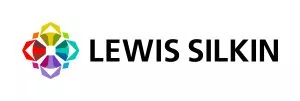- within Cannabis & Hemp, Tax and Strategy topic(s)
How are generative AI tools currently being used in the creative industries, and what are the risks this poses? What are the challenges of securing and enforcing copyright against AI developers? And how can we productively resolve the tensions between AI developers and the creative industries to the benefit of both sectors?
The recent 'Generative AI and Creative work' panel at 'The AI Agenda' featured Lewis Silkin's Oliver Fairhurst to speak with Candice Macleod (General Counsel and Head of Sustainability at creative agency adam&eveDDB), Dominic Young (publishing expert and founder and CEO of Axate) and Dr Alina Trapova (Lecturer in Intellectual Property Law at University College London). The panel examined these questions, offering provocative insights on the evolving landscape of rights, risks, and rewards in the age of AI.
Setting the Scene: AI's Role in the Creative Industries
The discussion opened with an exploration of how generative AI is currently being deployed across creative sectors and the benefits this can bring. Those benefits can include improving efficiencies, enhancing workflows and accelerating speed to market, which could free up creatives to do more strategic and innovative thinking, although the need to keep human connection was something best handled by humans. In the publishing industry Dominic highlighted that AI was being used experimentally but carefully for tasks such as research, transcription or summarisation. He noted however the importance of trust in relation to publishing news content where getting facts wrong has consequences, giving the recent example of the backlash against the Chicago Sun-Times when it published a summer reading list generated using AI which recommended books which do not exist.
The panel discussed the role of copyright, including its important role in providing incentives for the creative industries. Alina emphasised that in addition to the economic dimensions, copyright had an important role in protecting human creators and in supporting cultural development. She noted that in some of the policy debates there was sometimes a tendency to forget that the human creators and artists were often not the ultimate rightsholders in relation to their creative works, and that in the context of AI and copyright there was often a complex underlying network of authors contributing to a work. Drawing these two threads together, Candice noted the importance of ensuring that individual creatives were able to pursue a living from their work, to ensure the longer-term sustainability of careers in the creative sector.
Risks of Infringement and Mitigation Strategies
The panel considered the extent to which copyright might protect AI-generated outputs. The panel discussed the importance of human authorship and originality for copyright protection, noting that where an AI was being used by a human merely as a tool protection is more likely. Alina noted that this would often need to be assessed on a case-by-case basis, with particular attention given to both the human author's detailed conception of the work and the extent to which the human using the AI tool had engaged in controlled execution of its creation. Candice discussed the impact of the copyright eligibility of AI outputs in the advertising industry, noting contractual norms in the advertising industry.
The Regulatory Landscape: Consultation and Reform
The panel also addressed the potential outcomes of the UK Government Copyright and AI consultation. The creative industries have been quite critical of the Government's approach to the consultation, with Dominic arguing that the Government will ultimately need to find a way of 'walking back' from the proposed opt-out approach – a prescient prediction, with the Secretary of State for Science, Innovation and Technology accepting that opt-out would not be acceptable to the creative industries in a House of Commons debate only hours after the panel concluded. The panellists were concerned about how an opt-out system would operate, predicting that if it was adopted, new and high value copyright protected works would be opted-out of AI training, which may lead to an ecosystem where AI tools were trained only on lower quality and potentially biased content, leading to poorer quality outputs. Alina and Oliver discussed the legislative focus on transparency on the works that have been used for AI training but emphasising that for licensing to be successful there may need to be effective mechanisms for payment and clearer data about who to pay (noting the various authors, performers and creatives who may have contributed to the creation of a work). Dominic referred to the repeated history of the creative industries of developing and delivering innovative licensing solutions.
Key take aways: Towards Responsible AI in the Creative Industries
- Generative AI offers efficiency gains but cannot replace human creativity: AI tools are increasingly used in creative industries to streamline workflows and accelerate production, freeing up time for more strategic and innovative work. However, genuine human connection and creativity remain irreplaceable, particularly in fields like advertising and publishing.
- Copyright and risk management are complex and evolving: The use of AI in creative processes raises significant questions about copyright eligibility and infringement. Human authorship and originality have traditionally been key to protection, but the integration of AI complicates these assessments. Parties using AI should be proactive in addressing contractual risks, especially regarding warranties and indemnities related to AI-generated content.
- Collaboration and transparency are essential for future regulation: The panel highlighted the need for AI developers and the creative industries to work together on licensing solutions, rather than relying on proposed opt-out approaches to copyright and AI training. Greater transparency about training data and clearer identification of contributors to creative works will be crucial for effective licensing and sustainable industry practices as regulation evolves.
The content of this article is intended to provide a general guide to the subject matter. Specialist advice should be sought about your specific circumstances.



